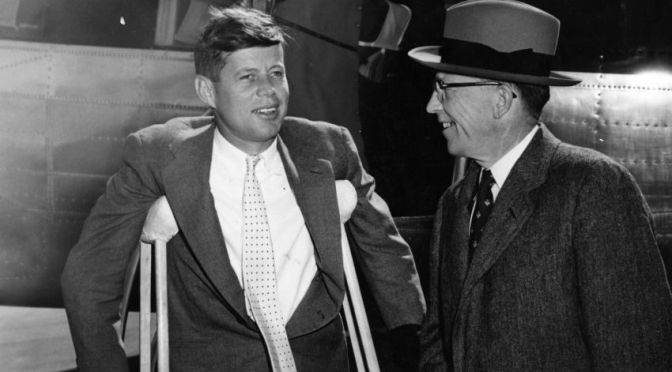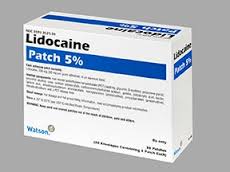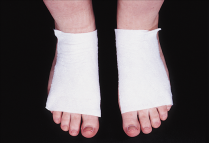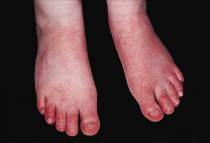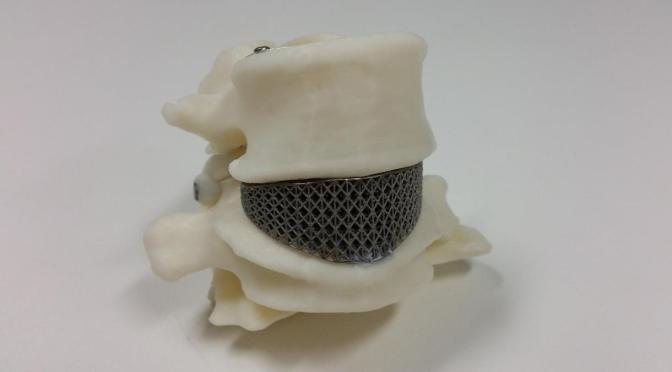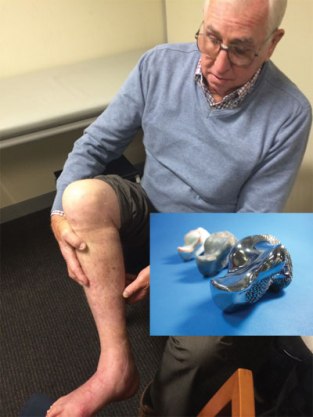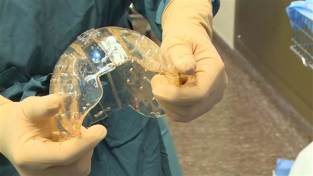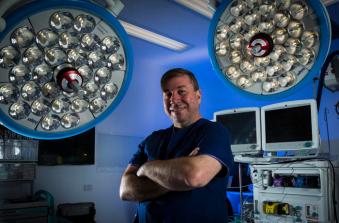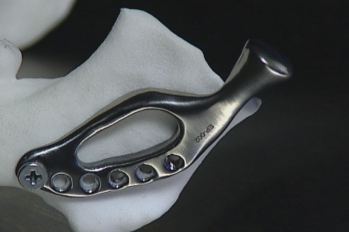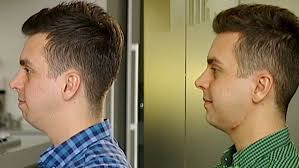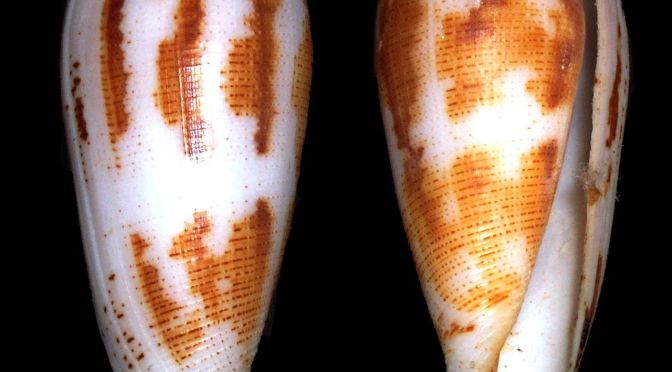Feature Image of John F. Kennedy on crutches due to severe back pain in 1954 sourced from:
Introduction
Dear Pain Matters readers,
Much has already been written about John F. Kennedy … What more could I possibly add here??
Having served less than 3 years as US President before being brutally shot down on 22 November 1963, John F. Kennedy is perhaps one of the most famous and beloved presidents in recent history.
Shock waves spread like wildfire throughout the world following his cold-blooded assassination.
(Much as I would have loved to have crossed paths with the iconic President Kennedy, I was not yet born, but rather, still in utero in the warmth of my mother’s womb during his final months. By the time I was born several months later, the world had already lost one of its greatest leaders of the free world.)
Today’s blog post will focus on John F. Kennedy’s excruciating back pain.
Quoting his brother, Robert F. Kennedy,
‘AT LEAST ONE HALF of the days that [President Kennedy] spent on this earth were days of INTENSE PHYSICAL PAIN … I never heard him complain … Those who know him well would know he was suffering only because his face was a little whiter, the lines around his eyes were a little deeper, his words a little sharper. Those who did not know him well detected nothing‘ (Pait & Dowdy, 2017).
It was even suggested that President Kennedy’s challenges with Nikita Khrushchev, Premier of Soviet Union, during the Cuban Missile Crisis were nothing in comparison to his deep and personal suffering due to severe back pain.
Who Was John F. Kennedy?
Overview
Born on 29 May 1917, the charismatic John F. Kennedy (JFK) served as the 35th president of the US from 20 January 1961 until his untimely death in Dallas, Texas, on 22 November 1963.
JFK made a genuine effort to make the world a better place. While addressing discrimination and poverty, JFK also stood for world peace, freedom, safety, civil rights and social justice.
The media played a huge role in portraying JFK as a fit, healthy and energetic young man with strong family values. For the most part, the media overlooked and/or downplayed JFK’s:
- Suffering due to excruciating back pain (as well as myriad other health issues including gastrointestinal issues and Addisons disease); and
- Extramarital affairs and lovers (far too many to count!).
Suppression of the former only adds to the stigma of chronic pain and hinders equitable distribution of resources toward pain research.
Understandably, the latter is unacceptable behaviour for a respectable President.
JFK’s Extramarital Affairs
First , let’s get to the dirt. After all, JFK’s weakness for beautiful women was part and parcel of who he really was. He simply adored being in the company of gorgeous and fascinating women. And yes, many of these women found JFK equally charming and irresistible.
JFK had love affairs with Marylin Monroe, actress Anita Ekberg, East German-born Ellen Rometsch (who was married to a German Air Force sergeant stationed in Washington), Mary Pinchot Meyer (a CIA agent’s ex-wife) and two White House secretaries (Priscilla Wear and Jill Cowen) as well as a very brief fling with Marlene Dietrich (who was 15 years older than JFK). The list of beautiful women bedded by JFK goes on and on (Browne, 2018).
Having said that, JFK had no intention of ever leaving Jackie Kennedy (née Bouvier), his elegant wife and devoted mother of their 2 beautiful children.

JFK and his future wife, Jacqueline Bouvier (1953)
http://time.com/4793898/john-f-kennedys-call-leadership/
Given that further details of JFK’s love life are outside the scope of this blog post, let’s move on …
JFK’s Ever Constant Companion – Severe Back Pain, His Back Brace and His Assassination
It has oft been said that if JFK had not suffered from severe back pain, he may never have entered politics in the first place. JFK’s back pain followed him everywhere, like a dark shadow.
In 1940, JFK failed the physical exams for both the Army and the Navy due to his back pain.
JFK’s severe back pain left him with no other option but to enter politics.
And it was severe back pain that ultimately forced him to wear an orthopedic brace on a daily basis. Made of cloth with metal rod inserts, JFK’s canvas corset back brace helped support his back that was in constant, unbearable pain.
Ironically, the brace that supported his back was likely the same brace that contributed to his death on 22/11/63 in Dallas, Texas. Specifically, his back brace prevented JFK from immediately slumping after the first bullet passed though his lower throat and neck. Instead, JFK’s brace forced his body to remain erect, despite being shot at twice.
‘Thanks’ to his back brace that kept him in an upright position , JFK remained visible and highly exposed to his assassin. Like a sitting duck, JFK was in the assassin’s direct line of fire. Sadly, when the 2nd bullet hit his head, JFK had absolutely no chance of survival.
It was suggested that if JFK had not worn his brace during the assassination, he may have slumped into his chair. As such, he may have received ‘only’ one bullet to his neck (and not 2 bullets – one to his neck and a second one to his head). As such, JFK may have slipped away from harm’s way of another bullet. Thus, it may have been possible to save JFK’s life.
Sadly, despite valiant efforts to try to save his life in hospital, JFK died within half an hour of being shot at twice.
Much has been written about what the world might have been like today if JFK not been fatally shot in Dallas, Texas, on 22 November 1963. The fact is that no one will never know for sure.
What is finally being revealed is the degree of JFK’s excruciating back pain.
Quoting Dr. Kelman, Internal Medicine and Physiology Specialist,
‘The most remarkable thing was the extent to which Kennedy was in pain every day of his presidency’ (
Summary
Severe and ongoing back pain framed JFK’s entire political career from start to finish. Excruciating back pain affected JFK non-stop since his early years at Harvard until the day he was shot.
It was his severe back pain that led JFK into politics in the first place. This is because back pain prevented JFK from pursuing other career options.
In all likelihood, it was severe back pain, and in particular, his back brace for his back pain, that shortened his time as USA’s 35th president and that took him straight into his grave at the tender age of only 46.
As one of the most charismatic and beloved US presidents in recent times, JFK enjoyed many accomplishments during his 1000 days as ‘the most powerful defender of freedom on earth’.
JFK played a huge role in defusing the Cold War between Washington and Moscow by successfully minimising conflict between Cuba and the US in October 1962. In so doing, JFK played a huge role in preventing a nuclear war at a time when the entire world was at the brink of World War III. The Soviet missile bases in Cuba were dismantled shortly after the Cuban Missile Crisis ended.
JFK also founded the Peace Corps, initiated the nuclear test ban treaty and supported the space program (Allison, 2012).
JFK’s Quotes
A review of JFK’s quotes reveals an intelligent man who longed for peace, harmony, freedom, stability, tolerance and justice for mankind.
Here is a sample of JFK’s more famous quotes:
‘… Let every nation know, whether it wishes us well or ill, that we shall pay any price, bear any burden, meet any hardship, support any friend, oppose any foe to assure the survival and the success of liberty. …
… My fellow Americans, ask not what your country can do for you, ask what you can do for your country. …’
(Inaugural Address, 20 January 1961)
‘… For in the final analysis, our most basic common link is that we all inhabit this small planet. We all breathe the same air. We all cherish our children’s futures. And we are all mortal.’
JFK’s above speech is here:
‘As we express our gratitude, we must never forget that the highest appreciation is not to utter words, but to live by them.’
‘If we cannot now end our differences, at least we can help make the world safe for diversity.’
‘Geography has made us neighbors. History has made us friends. Economics has made us partners, and necessity has made us allies. Those whom God has so joined together, let no man put asunder.’
‘We are not here to curse the darkness, but to light the candle that can guide us through that darkness to a safe and sane future.’
‘Once you say you’re going to settle for second, that’s what happens to you in life.’
‘If a free society cannot help the many who are poor, it cannot save the few who are rich.’
‘Conformity is the jailer of freedom and the enemy of growth.’
Above quotes sourced from: https://www.brainyquote.com/authors/john_f_kennedy
The next citation is quoted from JFK’s best-known international speech. This powerful speech was translated into German for the 400,000 people who came out to welcome JFK to West Berlin on 26 June 1963. Considered JFK’s most famous anti-communist speech, it delivered a message of solidarity to West Berlin at the height of the Cold War:
‘… Lass’ sie nach Berlin kommen. Let them come to Berlin.
Freedom has many difficulties and democracy is not perfect, but we have never had to put a wall up to keep our people in, to prevent them from leaving us. … for [The Berlin Wall] is … an offense against humanity, separating families, dividing husbands and wives and brothers and sisters, and dividing a people who wish to be joined together. …
All free men, wherever they may live, are citizens of Berlin. And therefore, as a free man, I take pride in the words,
‘Ich bin ein Berliner!”

JFK’s ‘Ich bin ein Berliner’ speech (26 June 1963)
Source: https://www.bbc.co.uk/news/magazine-23029697
http://www.let.rug.nl/usa/presidents/john-fitzgerald-kennedy/ich-bin-ein-berliner-speech-1963.php
Details of JFK’s Severe Back Pain Including 4 Back Operations:
Corticosteroid Treatments During JFK’s Youth
JFK received corticosteroid treatments for intestinal ailments as well as countless treatments for other medical issues throughout his childhood. These ongoing corticosteroid treatments may have contributed to JFK’s back problems and other medical problems.
Back Injury During Football at Harvard University (1937)
JFK’s back issues and pain may have started in his early 20’s after he suffered a spinal injury while playing football at Harvard University in 1937 (Donald, 2017).
Solomon Islands Boat Collision (1943)
As a 26-year-old lieutenant, JFK was in charge of a crew of 12 on a Navy patrol boat called PT-109 in the Solomon Islands. On 2 August 1943, JFK’s boat sank after being rammed and cut in half by a Japanese destroyer. Two (2) crew members died during gas tank explosions.
JFK led all 10 survivors to the safety of a neighbouring island after a 5-hour swim for 5km in the South Pacific Ocean. JFK also towed a seriously burned sailor by clenching the strap of the injured man’s life vest between his teeth while swimming.
The men were rescued from the South Pacific island several days later after JFK sent a coconut shell seeking help.
The strong impact during the Navy patrol boat’s collision (likely) further aggravated JFK’s lower back pain.
JFK was later awarded a Purple Heart and the Navy and Marine Corps Medal for his ‘extremely heroic conduct’ in the Solomon Islands.
A movie called ‘PT 109’ was released in June 1963, only 5 months before JFK was assassinated in Dallas, Texas.
https://www.imdb.com/title/tt0057393/
Four (4) Back Surgeries During 1944 to 1957
Overview
JFK underwent 4 back surgeries during 1944 to 1957.
Specifically, JFK had an unsuccessful discectomy operation in 1944, less than a year after his boat collision.
Ten years later, JFK underwent a failed spinal fusion via metal plate implant.
Sadly, both spinal operations led to even more pain and complications, with the second surgery almost leading to JFK’s death.
A 3rd back operation was done to remove the metal plate that had been unsuccessfully implanted only months earlier.
A 4th and final back operation was done in 1957 to drain and surgically remove an abscess that had formed along the surgical scar on JFK’s lower back.
Details below.
JFK’s 1st Back Surgery (23 June 1944)
JFK underwent his first spine surgery involving a left L4-L5 laminotomy* and L5-S1 discectomy** on 23 June 1944.
Two (2) weeks later, JFK’s excruciating back pain returned, together with severe muscle spasms in his lower back while walking.
Highly disappointed with the results of this back operation, JFK wrote:
‘In regard to … my operation … I think the doc should have read just one more book before picking up the saw’ (Pait & Dowdy, 2017).
JFK relied on crutches, wore a back brace, had daily physiotherapy and took pain medication for the next 10 years (when not in public) (Staedter, 2011; Volpe, 2017).
JFK’s 2nd ‘Promising’ Back Surgery … The One That Nearly Killed Him (21 October 1954)
Overview
In 1954, JFK (by now a Senator) was advised that a sacroiliac and lumbosacral fusion surgery might stabilise his lower back. Specifically, a spinally-implanted metal plate would fuse his vertebrae together.
On the other hand, if he chose not have lumbosacral metal implant and fusion surgery, JFK could end up in a wheelchair for life.
Due to his never-ending back pain, JFK decided to go ahead with the lumbosacral fusion surgery. In his mother’s words,
‘Jack … told his father that even if the risks were fifty-fifty, he would rather be dead than spend the rest of his life hobbling on crutches and paralysed by pain.’
(Pait & Dowdy, 2017).
Guess what happened anyway?
After his ‘promising’ back operation, JFK still spent most of his short life hobbling around on crutches, paralysed by pain, only to be ruthlessly shot dead by a crazy gun man.
As he once stated, ‘Life is unfair.’
Details of the 2nd ‘Promising’ Back Surgery
Although radiographs showed that the (previously operated on) L5–S1 disc was significantly reduced by ~70%, there were no compression fractures nor congenital abnormalities in the vertebrae bone.
Nevertheless, on 21 October 1954, the renowned Dr. Philip Wilson Sr surgically attached a curved metal plate onto the spinous processes*** on JFK’s vertebrae. Made of a cobalt-chromium alloy, the metal plate was affixed via 3 transverse locking bolts (plus some wire). Once firmly secured into position, the metal plate stretched from L5 in the lower back to S2 in the sacrum****.
This metal plate was also called a Wilson plate by its developer, being none other than JFK’s orthopedic surgeon, Dr. Philip Wilson Sr.
(See paper by Pait & Dowdy, 2017 that includes images of a Wilson plate.)
Disastrous Post-Surgery Results Including Septicaemia, Staphylococcal Infection and Coma
Immediately following back fusion surgery on 21 October 1954, JFK knew something had seriously gone wrong. JFK’s medical issues including back pain went from bad to worse.
JFK developed high temperatures, urinary tract infection and septicaemia before falling into a coma.
A priest was urgently called to his bedside to deliver the last rites of the church. Those nearest and dearest to JFK were no longer confident that he would survive.
When JFK finally did awaken from his coma, a serious staphylococcal infection had developed at the site of incision.
Quoting JFK’s friend (in italics), there was an ‘open, gaping, very sickly looking hole’.
Quoting another friend, ‘the area where they cut into his back never healed. It was oozing blood and pus all the time. It must have been painful beyond belief … It was an open wound that seemed to be infected all the time. And now and then a piece of bone would come out of the wound. His pain was excruciating’ (Pait & Dowdy, 2017).
Meanwhile, public awareness of JFK’s post-operative dramas was kept to an absolute minimum.
Survive he did … but only just (Pait & Dowdy, 2017).
JFK’s 3rd Back Surgery (10 February 1955)
It would be another 6 – 7 months before JFK was finally able to return to his duties as a Senator in May 1955.
However, prior to returning to work, JFK had to endure yet another back operation. This 3rd back operation was done to surgically remove the Wilson plate that had been implanted only months earlier. Sadly, a life-threatening abscess had formed around this metal plate.
Post-3rd Back Surgery
JFK remained heavily medicated throughout failed back surgery in 1954 and the follow-up surgery in 1955 (that reversed its disastrous results). JFK was hospitalised no less than 9 times during the next 2 years. Needless to say, JFK’s severe back pain continued to haunt and torture him.
JFK continued to wear his back brace and use his crutches (the latter, when not in public view).
JFK received alternative treatments including multiple hot baths daily, swimming, massage therapy, muscle strengthening exercises including lifting weights and heat therapy. JFK also commenced procaine trigger point injections for myofascial pain (more later).
JFK’s 4th and Final Back Surgery (13 September 1957)
A large Staphylococcus aureus-induced abscess was discovered on JFK’s lower back along the site of the surgical scar almost 3 years after his disastrous back surgery in 1954. This abscess had to be drained and surgically removed during a 4th and final back surgery in 1957 (Dallek; Baggaley, 2017; DeCosta-Klipa, 2017; Pait & Dowdy, 2017; Volpe, 2017).
A PHILOSOPHICAL QUESTION ABOUT ‘THE ELEPHANT’ IN THE WHITE HOUSE (aka JFK’s CHRONIC BACK PAIN)
Prelude to a Philosophical Question
Why did JFK have to hide his suffering due to severe back pain from the media and the voters?
Quoting historian David Nasaw,
‘[Voters] largely knew nothing of his illnesses and chronic pain … They were instead presented with the portrait of a superbly healthy young man, an athlete, a veteran, a smiling, affable, dynamic, energetic, youthful, handsome American with a smiling, healthy, athletic wife, parents, brothers, and sisters.’
Quoting Justin T. Dowdy, MD,
‘The most surprising finding … was the overall amount of severe pain JFK endured throughout his short life and, frankly, how he was able to hide his pain and medical ailments from the general public so well’ (Science Daily, 2017, for Pait & Dowdy, 2017).
In actual fact, JFK would scream out in pain during injections of procaine (up to 8 injections at a time) to numb the muscles deep inside his painful back. JFK literally had 100’s, if not 1,000’s, of procaine injections from 1955 to 1961 (Pait & Dowdy, 2017).
JFK would take up to 8 different kinds of medication a day including a wide assortment of painkillers (e.g. codeine, Demerol, narcotics, methadone, ethyl chloride spray, methamphetamine derivatives, hydrocortisone, anti-anxiety drugs, stimulants (Ritalin), sleeping pills and hormones). The list goes on and on.
JFK could not even put a sock or a shoe on his left foot without assistance.
Despite desperately wanting to, JFK could not even pick up his own children.
While JFK never complained openly about his back pain, he once stated (as already noted), ‘Life is unfair.’
Despite JFK also adding, ‘Some people are sick and others are well’, the latter was usually suppressed in media.
Instead, the public was led to believe that JFK’s back problems were caused by war injuries suffered while in the line of heroic duty when his boat, PT-109, was sunk in World War II.
Meanwhile, at least 10 boxes of X-rays were done in a desperate attempt to find the true cause for JFK’s back pain (DeCosta-Klipa, 2017).
Without a shadow of a doubt, JFK was the most powerful man in the free world from 1961 until his cold-blooded assassination in 1963. JFK remains one of the most influential and popular presidents in American history.
Not only are 100’s of places in the US named after JFK, but 72 streets and locations in (West) Germany also received Kennedy’s namesake following his death. Many other countries in the world also renamed streets, parks, schools and other places after JFK.
By renaming places and streets after him, JFK’s memory lives on forever (Kirk et al, 2013; Milbradt, 2017, in German).
A Philosophical Question
Would public knowledge of his severe and ongoing back pain have diminished, and even nullified, his chances of being voted as the US’s 35th president?
If yes, why??
How far have we come today? Are today’s leaders ‘allowed’ to admit to suffering from chronic pain (if any)? Or would this be viewed as a sign of weakness that could only lead to career suicide?
On the other hand, what would happen if our great leaders were ‘allowed’ to openly discuss any sufferances due to chronic pain?
Wouldn’t this lead to greater awareness of the problem of pain in our global community?
If yes, wouldn’t this lead to increased allocation of resources for pain research?
If yes, wouldn’t this be a good thing for humanity?
I hope you enjoyed today’s blog post on President Kennedy and his severe back pain.
Sabina Walker, Blogger of Pain Matters (in WordPress)
KEY
* Laminotomy involves the surgical removal of a large part of the lamina (i.e. normal bone) from the vertebra. This enables the surgeon to access the herniated disc.
** Discectomy involves the surgical removal of the herniated disc in the spine.
*** Spinous processes are bony projections (ridges) off the back of each vertebra that can be felt through the skin.
**** The sacrum is the triangular bone at the bottom of the spine.
REFERENCES
MEDIA
(1) Dallek, Robert. The Medical Ordeals of JFK. The Atlantic.
https://www.theatlantic.com/magazine/archive/2013/08/the-medical-ordeals-of-jfk/309469/
(2) DeCosta-Klipa, Nik. JFK had 5 brushes with death before that open-air Dallas car ride. Boston (22 May 2017).
(3) Altman & Purdum. In J.F.K. File, Hidden Illness, Pain and Pills.
https://www.nytimes.com/2002/11/17/us/in-jfk-file-hidden-illness-pain-and-pills.html?ref=oembed
(4A) Evans, Stephen. John F Kennedy: How ‘Ich bin ein Berliner’ gave a city hope. BBC News (25 June 2013).
https://www.bbc.co.uk/news/magazine-23029697
(4B) John Fitzgerald Kennedy – Ich bin ein Berliner Speech, June 26, 1963.
http://www.let.rug.nl/usa/presidents/john-fitzgerald-kennedy/ich-bin-ein-berliner-speech-1963.php
(5) Volpe, Kristin Della. John F. Kennedy’s Chronic Back Pain Conflicts Revealed. Spine Universe (27/12/17).
(6) Staedter, Tracy. How John F. Kennedy’s Back Pain Affected His Life and Death. Live Science (11 July 2017).
https://www.livescience.com/59764-john-f-kennedy-back-pain-affected-life-and-death.html
(7) Baggaley, Kate. Why doctors are still studying JFK’s chronic back pain – Did his back trouble help kill him? Popular Science (18 July 2017).
https://www.popsci.com/why-are-doctors-interested-in-jfks-back-pain
(8) Allison, Graham. 50 years after Cuban missile crisis: closer than you thought to World War III. The Christian Science Monitor (
(9) John F. Kennedy. History.
